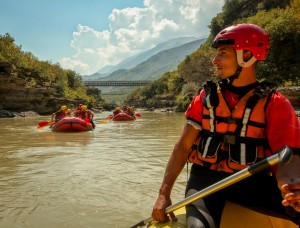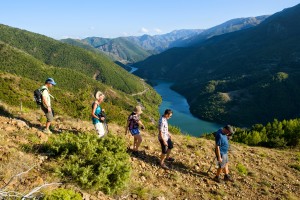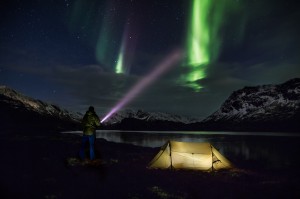
Difficult to define, the term fringe travel is generally used to describe tourism to regions seldom previously visited for any variety of reasons...and it’s on the rise in Europe.
In recent years, the ATTA has observed an increase in travellers drawn to less-discovered regions such as the Balkans, the Baltics, countries in Eastern Europe like Poland and Czech Republic, as well as the Nordic countries. Often, these visitors are thrill enthusiasts seeking adventure. Nancy Tare from Our Own Expeditions, a boutique travel operator in Albania, attests that her clients are typically well-travelled adventurers out to discover off-the-beaten path destinations and often considering this Balkan country as a ‘bucket list destination.’
A desire to discover the unknown -- to take the road less travelled -- is human nature. Robert Frost’s famous lines -- “two roads diverged…and I took the one less travelled by, and that has made all the difference” -- sums up the concept of fringe travel. Just as in the Age of Discovery in the 1400s and 1500s when Europeans charted unknown waters to discover the Americas, today travellers worldwide are pushing the traditional boundaries of European travel. Gone are the days where Paris, London and Rome constitute “Europe.” Now, travellers are discovering places such as Albania and Macedonia, Estonia and Poland, Greenland and Iceland.

“Each year there is an increase in travelers coming to the country...There are a lot of first time visitors that just want to explore the land,” Tare says about Albania. “So things such as hiking, walking and visiting little villages and B&B’s along the way is much more popular.”
There are many factors why this is happening now. In certain cases, like in the Balkans, travel was previously restricted due to unrest. Even though 20 years have passed since the end of the bloody conflict, tourism was halted for years. Today, the region is recovering (as seen by the success of AdventureWeek Western Balkans) and travellers are rediscovering the magic of the Balkans. It was a similar story in Eastern Europe and the Baltics, as the Iron Curtain significantly restricted travel to more than a dozen European countries.
Aside from political inaccessibility, a principle reason for this trend is social media and media coverage. In simpler terms, Internet sharing has helped create the desire to visit these regions, and in some cases, reminded the world of their existence. In addition to providing up-to-date information, creating brand images, and permitting companies to connect with clients in an informal manner, social media also allows travellers to share their trips, experiences, stories, and photos with each other—making fringe destinations sound cool and fun, and putting them on the map.
“There is increased exposure of Macedonia in the media (CNN, major news outlets around EU, press trips, family trips),” says Jane Josifovski of Macedonia Experience, which provides a variety of active and cultural tours throughout Macedonia. “The improved SEO [search engine optimization] and follow-up by our booking handlers from the U.S. led to an increased number of direct inquiries/bookings. Mentions in the L.A. Times, NY Times, Huffington Post and Outside have their role too.”

Social media is also a great way to promote a destination without stressing budgets. “Our budget is limited, which is why we offer different marketing tools and free images and film that make it easier for the trade to promote and sell Greenland as an adventure travel destination,” says Lykke Yakaboylu of Visit Greenland, a non-profit organization promoting package tours to Greenland.
Fringe destinations also are getting physically easier to visit. Better transportation infrastructure connects hubs to rural destinations, and developments such as better roads, high-speed trains, direct flights and budget airlines make the act of arriving easier. “There is an increase in travel from Iceland and with routes directly into towns in Greenland,” says Yakaboylu. “The biggest island in the world has become easily accessible.” Inventive operators are even incorporating alternative transportation, such as transportation by horse in mountainous regions, or portage by mountain bike instead of vans.
Offering interesting, varied and unique itineraries also seem key. “Our activities include hiking and walking treks with a theme. For example, ‘Traveling in the Footsteps of Lord Byron,’ offered on foot or on horseback…with authentic experiences all the way,” Tare says, while Yakaboylu claims Greenland tourists demand exciting combinations of “The Big Arctic Five: Dogsledding, Northern Lights, Whales, Ice and the Pioneering People.” With the wide range of well-planned, adrenaline-fuelled itineraries to choose from, travelling to the fringes of Europe has never been easier.
Never underestimate the power of ease. When most travellers go on vacation—even to fringe destinations—they want everything to be simple. Technological developments such as apps that allow travellers to book via mobile sites and keep everything organized, not to mention better international plans and faster Internet keeping them connected with loved ones, will make travellers feel at ease when choosing remote places.
Of course, the ATTA plays its role in supporting growth of businesses in fringe destinations such as Macedonia. According Josifovski of Macedonia Experience, “The ATTA is beneficial because it helped us speed up the negotiations…so 2016 is expected to be very successful.”
At the end of the day, understanding trends and changes in what travellers want is paramount to profiting from fringe travel. As Tare states, “We are a seasoned tour operator not only ‘on the ground’ understanding the needs of the travelers, but aligning them with the local people and business as well.”
